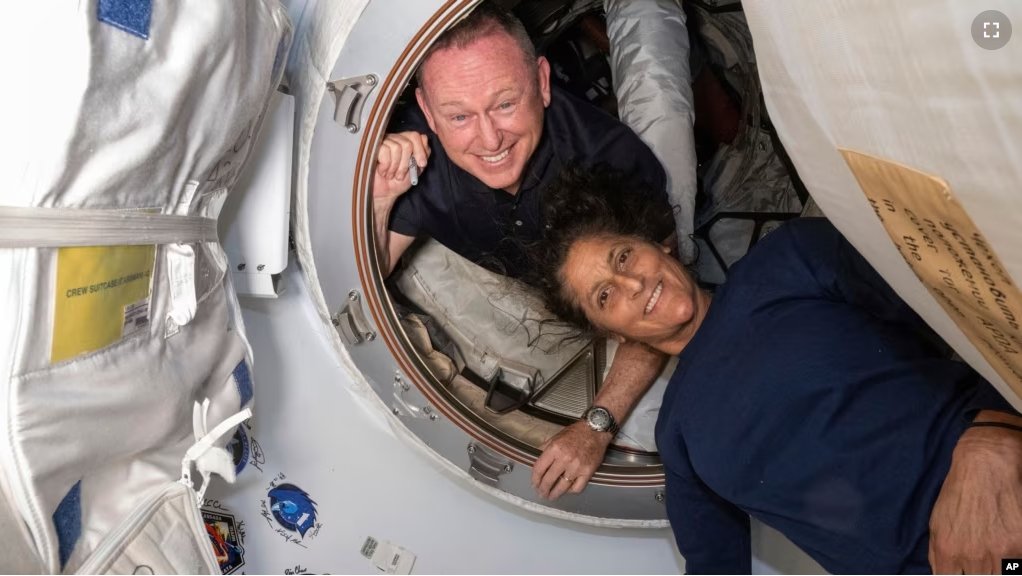Two American astronauts awaiting their return flight from the International Space Station (ISS) have stayed busy carrying out a series of scientific experiments.
The U.S. space agency NASA has said the pair – Butch Wilmore and Suni Williams – will remain at the ISS until late March or early April. When they arrived at the orbiting laboratory in June 2024, the astronauts expected to stay in space for just one week.
Their trip was a test flight of Boeing’s Starliner spacecraft. While Starliner safely transported the two to the ISS, the spacecraft had several problems that persuaded NASA to send it back to Earth for further testing without the astronauts onboard.
NASA’s current plan calls for Wilmore and Williams to fly back on a SpaceX spacecraft in late March at the earliest. NASA has been using SpaceX’s Crew Dragon to regularly carry astronauts and supplies to the ISS since 2020.
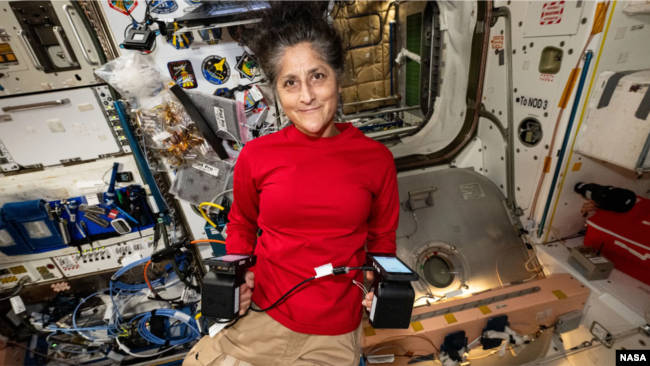
The astronauts have been using their extended mission to carry out experiments. In addition, Williams stepped out of the space station earlier this month to complete a spacewalk.
Another NASA astronaut, Nick Hague, joined Williams on the spacewalk on January 16, the agency said in a statement.
The two repaired a piece of equipment that helps guide the movements of the ISS. The spacewalk also included work on an X-ray telescope, as well as maintenance activities for other ISS systems. NASA noted it was the fourth spacewalk for Hague and the eighth for Williams.
The space agency said Williams was preparing for another spacewalk planned for January 30. Wilmore is expected to join Williams on that spacewalk, which NASA estimates will last about six-and-a-half hours. The two will be aiming to remove a radio antenna structure. They will also be “searching for microbes” around the ISS for use in experiments.
Here is a look at other experiments Wilmore and Williams have completed during their stay:
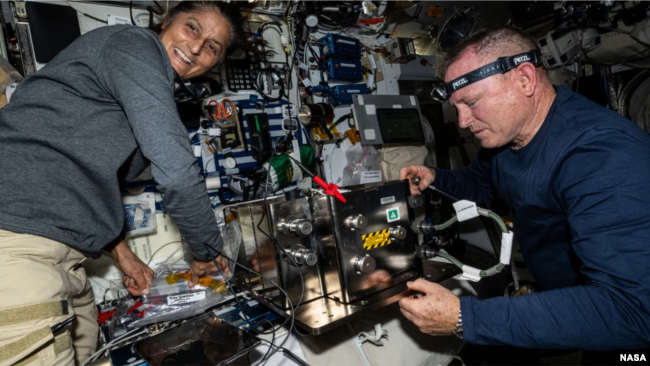
New methods to grow food
NASA said Wilmore and Williams have tested different methods for growing crops in space. Such methods could support humans who have longer stays in space in the future.
One experiment is called the Plant Water Management investigation. NASA said this experiment “uses the physical properties of fluids…to overcome the lack of gravity and provide hydration to plants.” The experiment aims to help NASA develop hydroponic systems to support future space missions.
Another experiment examines a new way to grow vegetables, plants and flowers inside the ISS to provide nutrition and beauty. As part of this experiment, Wilmore installed a new light meter inside the ISS. The device is designed to measure available light and to help crew members improve growing operations.
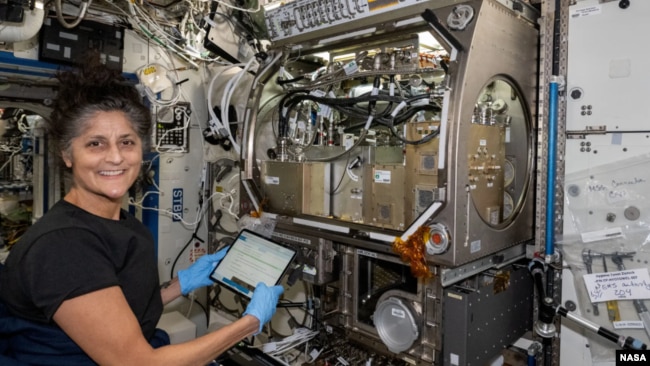
Robot assistants
NASA also said that throughout the current mission, Williams had deployed and observed three free-flying robots called Astrobee. This robotic experiment seeks to examine how such robots could assist astronauts with daily duties and maintenance work.
The agency said the square-shaped robots are designed to help scientists and engineers develop and test new robotic technologies for use in microgravity environments. The assistants are also designed to help astronauts with daily tasks “and give ground controllers additional eyes and ears on the space station.”
Williams tested the robots’ ability to map the inside of the space station and Astrobee’s flight abilities.
Image captures from space
NASA astronauts visiting the ISS have a long history of capturing images of Earth from space. And this is another activity Wilmore and Williams have carried out. The ISS gives astronauts a “window to the world” as they orbit 400 kilometers above their home planet.
During their mission, NASA said the two astronauts had “captured hundreds of photographs of Earth, ranging from auroras, land, sea, orbital sunrises and sunsets, and more.”
Radio connections with Earth
Another space station tradition is for U.S. astronauts to connect with students and other interested individuals during their stay in space. They have virtual visits with people back on Earth who can ask the astronauts how it feels to live in space and can learn about NASA’s experiments aboard the ISS.
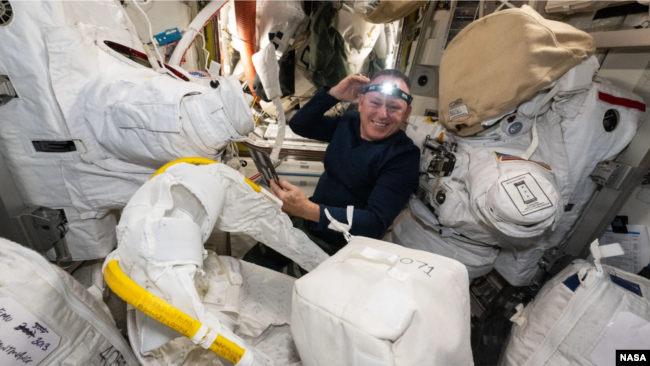
In early August, Williams used ham radio technology to connect with students from Banda Aceh, Indonesia. NASA explained that students get the chance to communicate with the astronauts when the ISS passes overhead. The students can ask about research on the ISS as well as the radio wave technology that makes the communication possible.
I’m Bryan Lynn.
Bryan Lynn wrote this story for VOA Learning English, based on reports from NASA and The Associated Press.
Quiz – Astronauts Stay Busy on the International Space Station Awaiting Flight Home
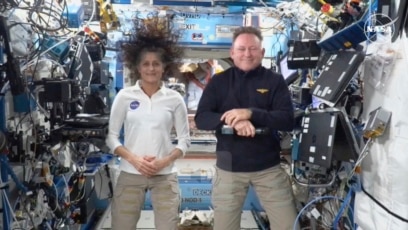
Start the Quiz to find out
___________________________________________________
Words in This Story
antenna – n. a device used to send or receive communications signals
hydration – n. the process of making the body take in water or other liquid
hydroponic – adj. relating to or grown using a method of growing plants in water, sand or gravel
install –v. to put a piece of equipment in place so that it can do what it is designed to do
meter –n. any device either analog or digital that measures a value in the physical world
maintenance – n. the work needed to keep something operating in good condition
aurora – n. a natural appearance of colored lights in the sky
virtual – adj. happening using digital communications and not taking place physically
ham radio – n. an activity that sends and receive radio messages as a hobby
